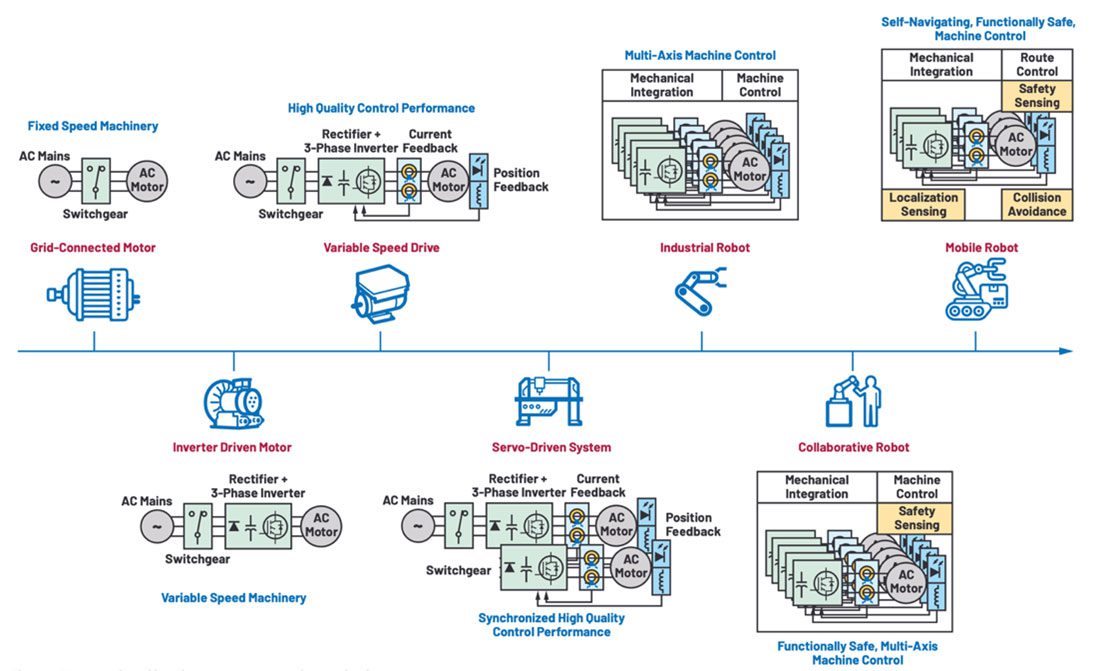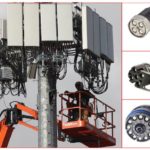Motion Control: Sensing Solutions Optimize Manufacturing Systems
Motion control systems harvest data to help create faster, more precise, and more resilient manufacturing processes. A host of sensors help unlock deep insights into factory operations.

Motion control is the process by which the elements in a manufacturing process are set into a precise and controlled system of motion. These systems must meet the same criteria as other manufacturing components for the manufacturing facility to be efficient, responsive, and robust.
Designing smarter motion control systems for manufacturing facilities begins by achieving higher precision current and position measurements, which creates opportunities to minimize waste while maximizing responsiveness and throughput. The precision of any motion control system depends on its sensors.

Motion control applications guide every aspect of the production line. (Image source: Analog Devices)
While there are many position sensor options, magnetic sensors offer high resolution at a lower cost than optical encoders. They are more robust in applications subject to dust and vibration, and their contactless nature minimizes wear and tear.
However, magnetic sensors can be susceptible to external magnetic fields’ interference and surrounding materials’ influence. Their accuracy can also be affected by temperature fluctuations, so calibration may be necessary to maintain their accuracy in applications that experience a changing range of conditions. These maintenance issues can reduce cost and reliability advantages. Also, many magnetic sensors only perform well in close range, which limits design possibilities.
One sensor choice that balances these considerations is anisotropic magnetoresistance (AMR) sensors. Unlike Hall effect sensors, giant magnetoresistance (GMR) sensors, and tunnel magnetoresistance (TMR) sensors, AMR sensors exhibit robustness in magnetically harsh environments and maintain accuracy with wide air-gap tolerances. The need for calibration and maintenance is considerably reduced because AMR sensors don’t experience degradation and angular error under these conditions.

The ADA4571 family of angle sensors from Analog Devices are equipped with integrated signal conditioners, facilitating higher absolute accuracy position sensing for motor drive and servo applications. The ADA4571 features built-in calibration engines that keep errors to <0.5° over a wide range of temperatures.
Sensors monitor machine health
While performance is essential in the intelligent factory, so are efficiency and resilience. By monitoring motor vibration and shock, machine health sensors (such as vibration sensors) in factories can reduce unplanned downtime, extending the asset’s useable lifetime while reducing maintenance costs. While there are many sensor options, microelectromechanical systems (MEMS) accelerometers strike an appealing balance of capabilities, offering high bandwidth and low noise at a fraction of piezoelectric systems’ price and power consumption.

The ADXL1001/ADXL1002 family of MEMs sensors exhibits noise of just 25 micro g per root Hertz (μg/√Hz) in the ±50 g range, and resilience to external shocks up to 10,000 g. A linear frequency response from DC to 11 kilohertz (kHz) makes the parts suitable for slowly rotating equipment, while low power consumption facilitates wireless sensing designs. For applications that require measurement along three axes, the ADXL371 can be a suitable choice.
Sensing solutions have the ability to unlock deep insights into factory operations. Once data such as voltages, currents, positions, and temperatures are collected from various motion-control systems, automated systems can analyze this data to optimize real-time manufacturing flows.
Deterministic data collection currently involves fieldbus protocols like EtherCAT and PROFINET. However, the industry is rapidly adopting Time-Sensitive Networking (TSN) as a standard for next-generation networks. This trend is fundamental to the emergence of converged information technology/operational technology (IT/OT) infrastructure, which brings together enterprise and factory floor systems on a single network.
These networks require sub-millisecond network cycle times to ensure determinism and up to gigabit bandwidth to accommodate new high-speed traffic sources such as video feeds from vision systems. Modern motion control systems need Ethernet physical layers (PHYs) like the ADIN1200/1300 family to meet these requirements. These robust, low-power and low-latency PHYs support GbE in industrial environments. They can operate in ambient temperatures up to 105 °C, have been extensively tested for electromagnetic compatibility (EMC), and offer rugged features like brownout protection.
Intelligent and precise motion control is a pivotal element in modern manufacturing lines and moves factory operations toward greater agility, performance, and resilience. Sensor selection is central to designing efficient systems. With newly expanded sensor options, engineers have opportunities to improve every element of the production line, from position tracking to machine health monitoring. As we move forward into the digital era, fusing intelligent motion control and advanced networking into manufacturing systems promises an increase in efficiency, production levels, and quality in both operations and final product.
Visit DigiKey to learn more about sensors, encoders, and transducers for smart automation.
Like this article? Check out our other Artificial Intelligence, and Automation articles, our Sensors & Antennas Market Page, and our 2023 and 2024 Article Archives.
Subscribe to our weekly e-newsletters, follow us on LinkedIn, Twitter, and Facebook, and check out our eBook archives for more applicable, expert-informed connectivity content.





